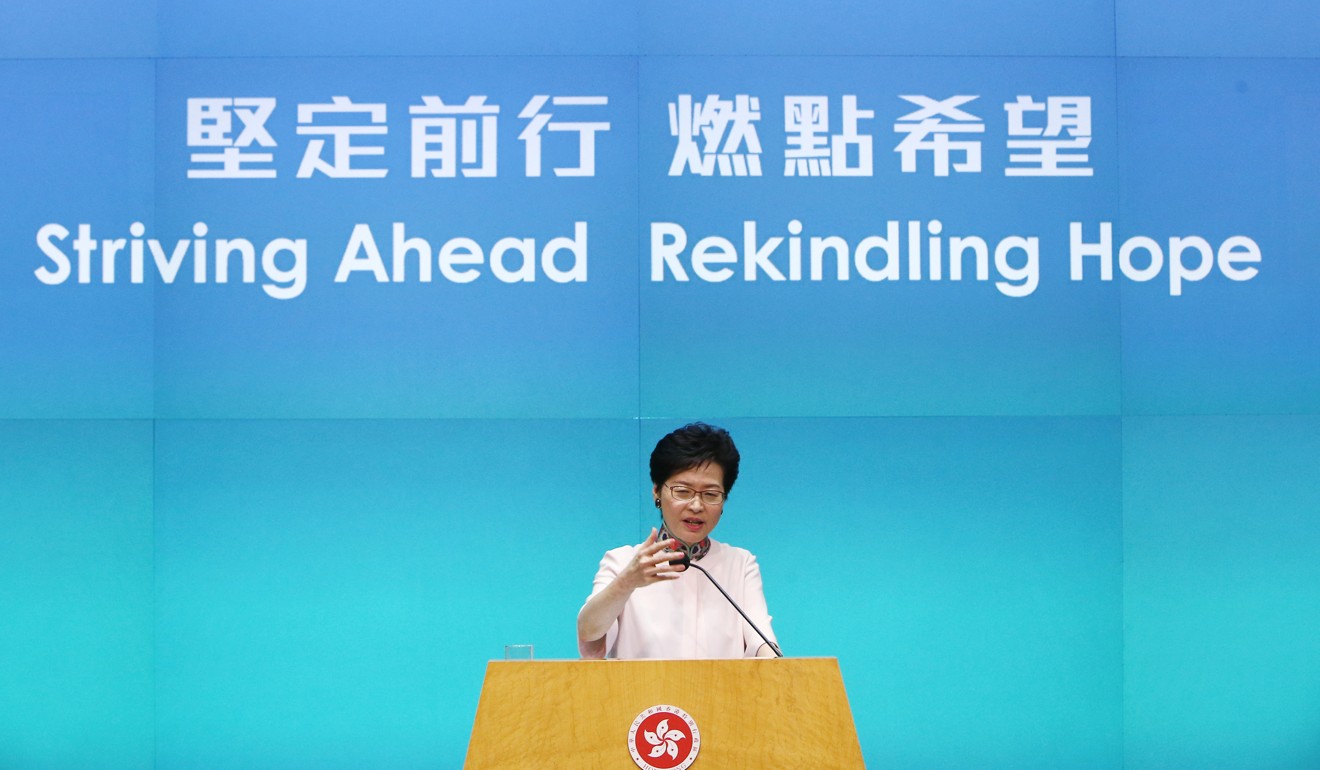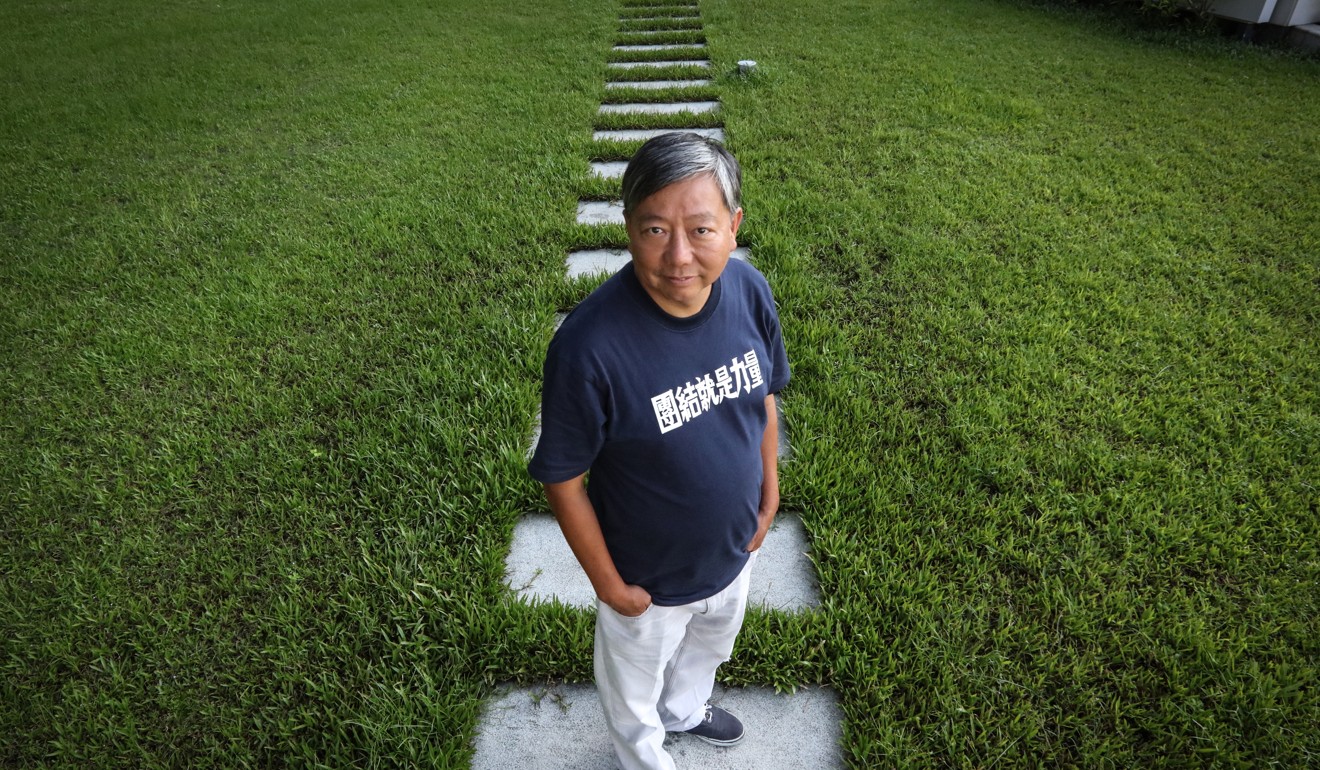
Hong Kong leader Carrie Lam’s proposal to increase MPF subsidy to HK$29.3 billion over 25 years to remove offsetting mechanism fails to impress business leaders or unionists
Chief executive makes clear in policy address that controversial mechanism in pension scheme must be scrapped
For years, the so-called offsetting mechanism has allowed bosses to use their portion of contributions to employees’ MPF accounts to cover long service and severance payments.
Unionists complain that workers have little left in their pension funds after the offsetting and demand it be scrapped.
“The issue of MPF offsetting has been a bone of contention for a long time,” she said. “I consider now the time to make a decision to settle the issue that has beleaguered wage earners for years and to accord better retirement protection to employees.”
Last year, then chief executive Leung Chun-ying proposed a subsidy of HK$7.9 billion over 10 years for employers. After Lam took over as leader, she proposed HK$17.2 billion over 12 years under a complex, two-tier subsidy scheme.
Cost of your commute could double as government targets congestion
On Wednesday, she increased the subsidy amount to HK$29.3 billion, and extended the length of the subsidy’s second tier to 25 years. Government sources said the HK$29.7 billion figure was based on data from 2016, and the actual spending would likely be more, after taking inflation and the rise in salaries into account.
Under the proposal, employers would first need to set up saving accounts for their staff and then contribute 1 per cent of employees’ wages into it.
Employers would no longer be allowed to do offsetting. They could use the money in the new savings accounts to cover long service and severance payments.

The government would then help them deal with the financial burden with the two-tier subsidy.
In the first three years of the scheme, bosses would get a subsidy of 50 per cent of the long service and severance payments under the first tier. Employers would have to pay the remaining 50 per cent with the money from the new savings accounts.
If the money in the account was insufficient, employers could apply for a second tier of subsidy. But the upper limit of the second tier would be 50 per cent of the remaining sum of the long service and severance payments.

The first-tier subsidy would be in place for 12 years, and the second tier for 25 years.
Lam said the subsidy period had been increased “significantly” and she believed this would help micro, small and medium-sized enterprises. Smaller companies were more likely to require second-tier subsidies.
Five key takeaways from Carrie Lam’s policy address
The subsidy rate would be regressive, with employers getting less over the years.
A government source acknowledged that the formula was complicated and said officials were considering an internet calculator to make employers’ lives easier.
The government plans to secure the Legislative Council’s approval by 2022 and implement the proposal in 2024.

Veteran unionist Lee Cheuk-yan slammed the government for being too generous to employers with taxpayers’ money.
“The proposal is completely skewed towards the employers. It is to pay their bills,” Lee said.
Federation of Trade Unions lawmaker Wong Kwok-kin was disappointed it would take so long for the offsetting mechanism to be scrapped and described the delay as “unreasonable”.
As it happened: Carrie Lam’s policy address
Labour Advisory Board member Bill Tang Ka-piu urged officials and the legislature to work together to get the proposal passed as soon as possible.
The business sector also did not embrace the proposal.
Chinese Manufacturers’ Association permanent honorary president Irons Sze Wing-wai said 12 years was too short a period for the first-tier subsidy.
Federation of Hong Kong Industries chairman Jimmy Kwok Chun-wah said: “I support the direction the government is heading … but for now, there isn’t enough ground to back the proposal.”
Additional reporting by Alvin Lum
‘I can manage extra cost, but firms will struggle with complex maths’
Businessman Johnny Ho Kai-man, who runs a security services company with about 2,000 guards, estimates he will be forking out about HK$3.6 million a year if he has to contribute an extra 1 per cent to his employees’ MPF accounts.
This would be manageable, he said, but what bothered him and many small to medium-size firms was that the calculation formula for the two-tier subsidy scheme was just too complex.
“For many companies, those responsible for the accounting are not actuaries but regular folks who are just quite good with maths. They would struggle to do the complex calculations,” Ho said.

Under the new proposal, employers need to calculate how much they will get in government subsidies once the MPF offsetting mechanism is scrapped.
Ho, chief executive of Johnny’s Group Holdings, said if the government insisted that the first-tier subsidy would only last 12 years, the subsidy rate should be higher. The rate should also be fixed and not regressive, he said, otherwise employers would struggle with the calculation.

He also warned that once employers faced a bigger financial burden after the MPF offsetting mechanism was scrapped, they would just charge consumers more to make up for the burden.
Lawrence Lui Wai-ching, co-founder of the Longevity Design House that helps the elderly with interior designs, said the subsidy amount and period were acceptable. He founded the start-up three years ago and has 18 employees.
He said that no one would work in the same company forever, and thus employers would have to pay long service and severance payments eventually.

But he was concerned that once his company had grown bigger and hired more staff, the long service and severance payments he would have to pay would become much larger.
The entrepreneur said that if the government was determined to help start-ups, officials need to encourage different departments to use products and services from them.


